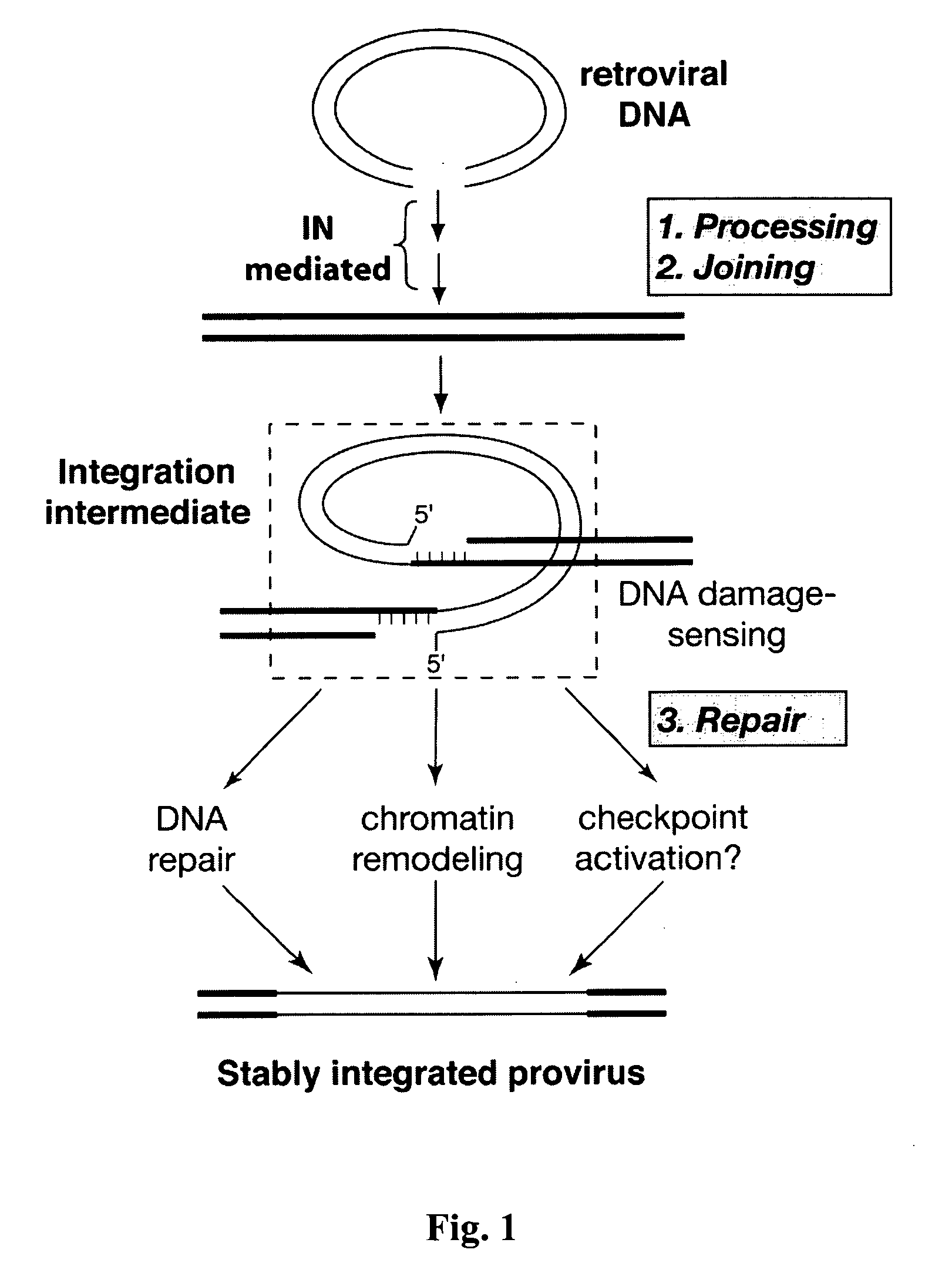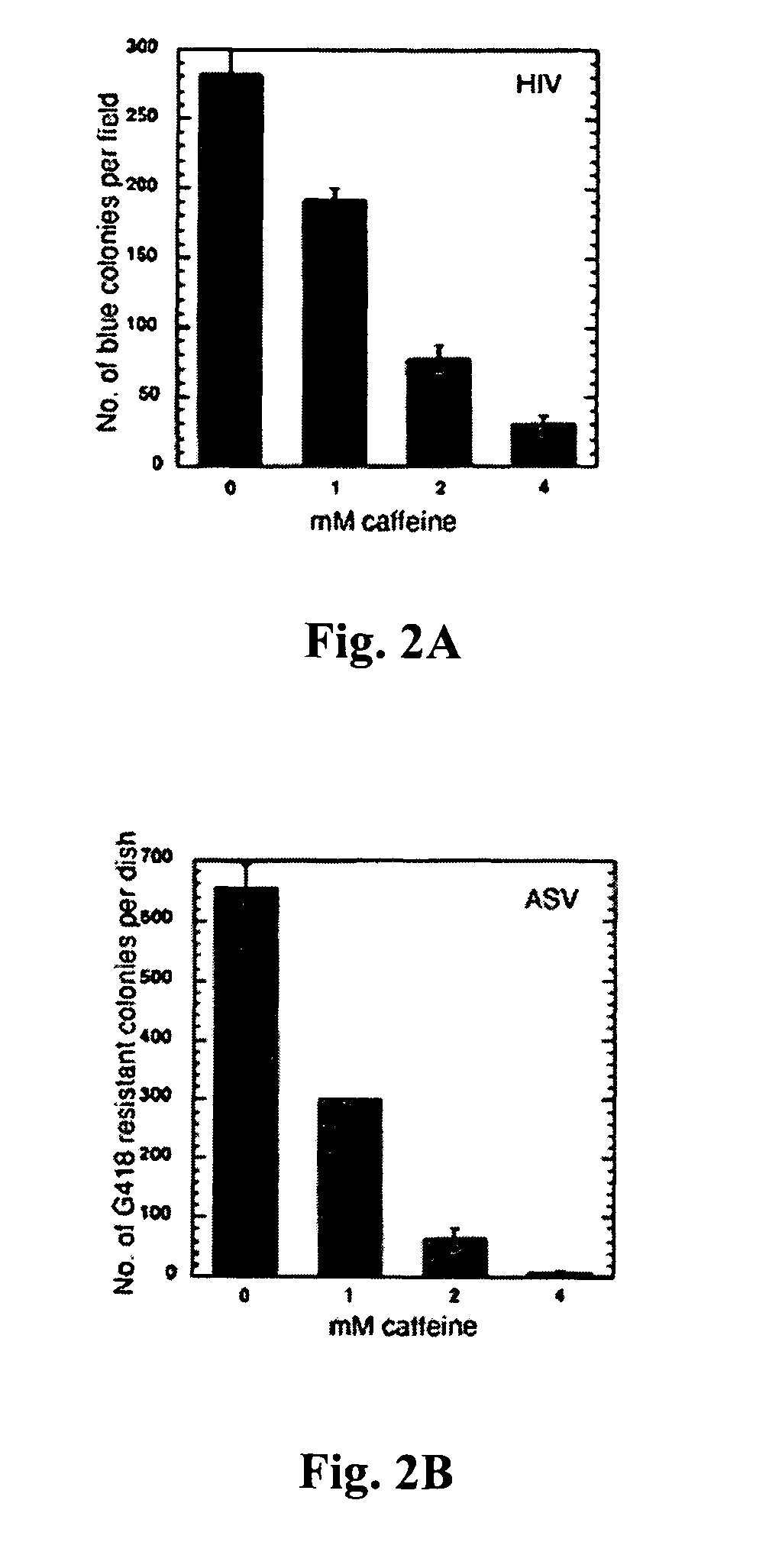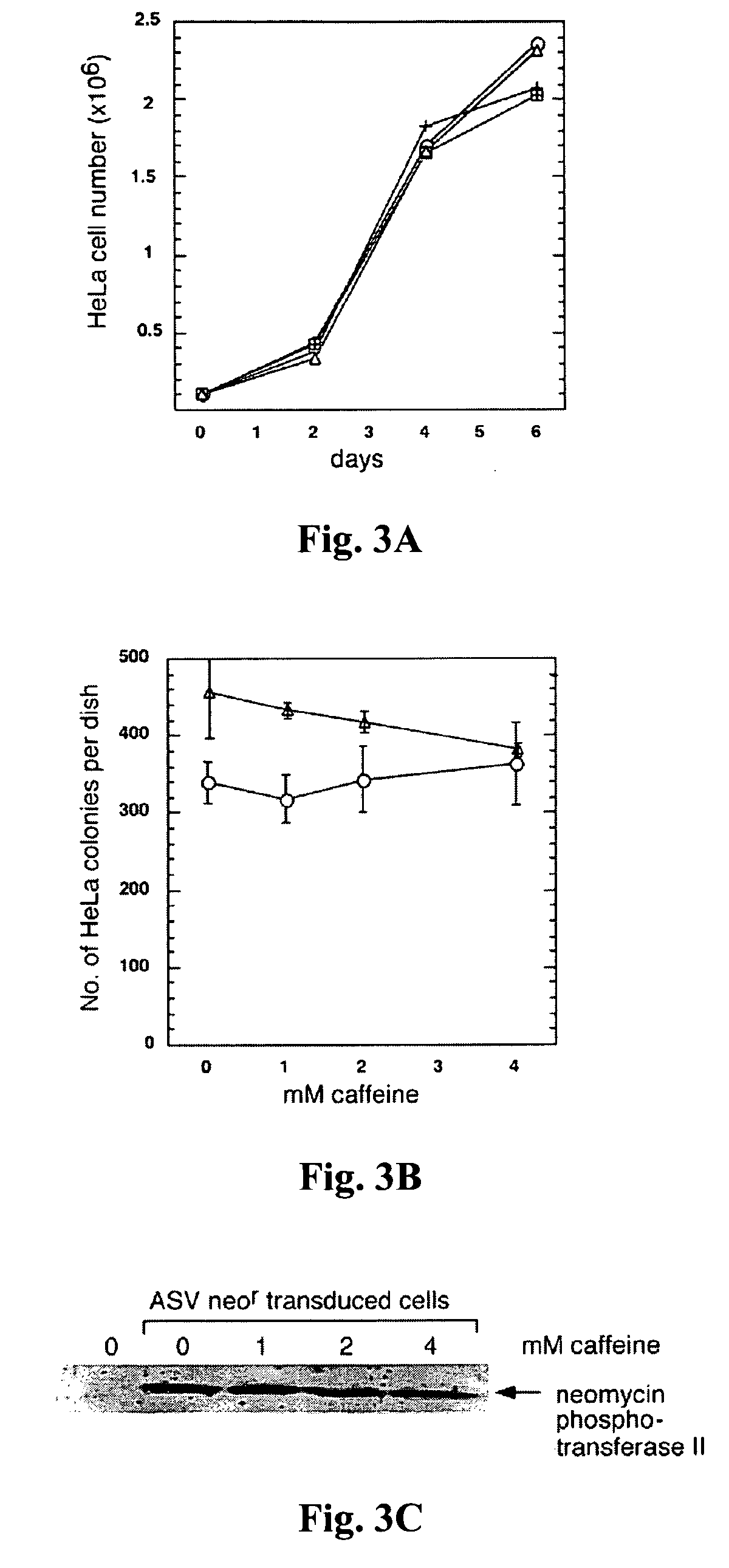Cellular targets for treatment of retroviral infection
a technology of retroviral infection and cellular targets, which is applied in the field of retroviral infections and pathological conditions, can solve the problems of high mutation rate, drug resistance, cell cycle arrest, etc., and achieve the effect of efficient retroviral integration
- Summary
- Abstract
- Description
- Claims
- Application Information
AI Technical Summary
Benefits of technology
Problems solved by technology
Method used
Image
Examples
example 1
[0061]The following materials and methods were employed in the examples to follow, unless otherwise described.
[0062]Cells and Viruses. GM847 / ATRkd is a simian virus 40-transformed human fibroblast cell line stably transfected with a mutant ATR gene under the control of a tet-inducible promoter (Cliby, W. A., et al., (1998) EMBO J. 17, 159-169). Upon addition of doxycycline (1-5 μg / ml) the cells overproduce a protein containing a D2475A substitution that inactivates the kinase activity. HeLa, 293T, and GM847 / ATRkd cells were maintained in DMEM supplemented with 10% fetal bovine serum (FBS) and Pen / Strep. The HIV-1 vector carrying the lacZ reporter was prepared as follows: 293T cells were plated on 100 mm dishes at a density approximately 106 cells per dish. The following day, cells were transfected using the 3-plasmid system described previously (Naldini et al., Science 272: 263-267, 1996). 25 μg lacZ plasmid, 50 μg backbone plasmid, 5 μg VSV G plasmid were used p...
example 2
Stable Transduction of HeLa Cells by HIV-1-Based and ASV-Based Vectors is Inhibited by Caffeine
[0081]To determine if caffeine can inhibit stable transduction by HIV-1, HeLa cells were infected with an HIV-1-based vector that expresses a lacZ reporter gene (Naldini et al., 1996, supra), in the presence of a range of concentration of the drug. Caffeine was added at the time of infection, and removed after 24 hr. Transduction was measured five to six days later by the presence of β-galactosidase positive colonies. The results showed a reduction in the number of cells stably transduced by the vector, with an IC50 for caffeine estimated at 1.5 mM (FIG. 2A).
[0082]To determine if caffeine would inhibit stable transduction by another retrovirus, the protocol was repeated with an ASV-based vector (Daniel et al., 1999, supra) that carries a neor reporter, and selected stable transductants after treatment with G418. As with HIV-1, a reduction in the number of cells stably transduced by the ASV...
example 3
Lack of Effect of Caffeine on Inhibition of HeLa Cell Growth, Colony Formation and Expression of the Transduced Reporter Gene Under Conditions in Which Retroviral Transduction is Inhibited
[0083]Caffeine has been reported to have no detectable effect on cell growth at 0.5-10 mM concentration (Zhu et al., J. Virol. 73: 3309-3316, 1999). Similar results were observed at 2 mM or 4 mM concentration (FIG. 3A). To test the effect of caffeine on colony formation, uninfected HeLa cells were plated at a low density and exposed them to the drug for 24 hr. The results showed that such treatment with caffeine had no significant effect on either colony number or colony size (not shown) at up to 4 mM concentration (FIG. 3B, triangles). Finally, the combined effects of G418 and caffeine treatment on colony formation by HeLa cells were examined. An ASV-neor-transduced, G418-resistant population of HeLa cells was treated with the concentration of G418 used to select resistant colonies, together with ...
PUM
| Property | Measurement | Unit |
|---|---|---|
| concentration | aaaaa | aaaaa |
| concentrations | aaaaa | aaaaa |
| concentrations | aaaaa | aaaaa |
Abstract
Description
Claims
Application Information
 Login to View More
Login to View More - R&D
- Intellectual Property
- Life Sciences
- Materials
- Tech Scout
- Unparalleled Data Quality
- Higher Quality Content
- 60% Fewer Hallucinations
Browse by: Latest US Patents, China's latest patents, Technical Efficacy Thesaurus, Application Domain, Technology Topic, Popular Technical Reports.
© 2025 PatSnap. All rights reserved.Legal|Privacy policy|Modern Slavery Act Transparency Statement|Sitemap|About US| Contact US: help@patsnap.com



